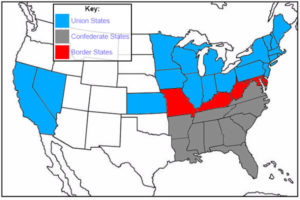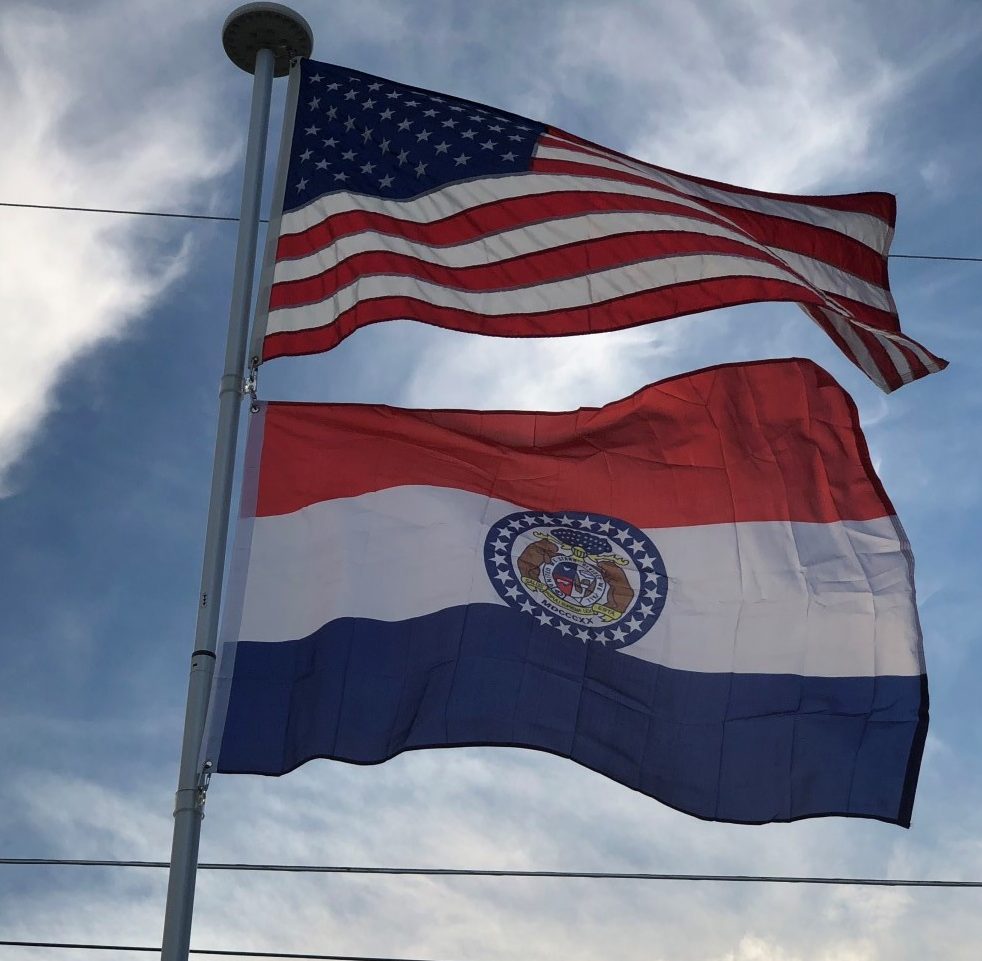Conflicts over slavery exacerbated border tensions among the states and territories. From 1838 to 1839, a border dispute with Iowa over the so-called Honey Lands resulted in both states’ calling-up of militias along the border.
With increasing migration, from the 1830s to the 1860s Missouri’s population almost doubled with every decade. Most of the newcomers were American-born, but many Irish and German immigrants arrived in the late 1840s and 1850s. As a majority were Catholic, they set up their own religious institutions in the state, which had been mostly Protestant. Having fled famine and oppression in Ireland, and revolutionary upheaval in Germany, the immigrants were not sympathetic to slavery. Many settled in cities, where they created a regional and then state network of Catholic churches and schools. Nineteenth-century German immigrants created the wine industry along the Missouri River and the beer industry in St. Louis.
Missouri in the Civil War:
After the secession of Southern states began in 1861, the Missouri legislature called for the election of a special convention on secession. The convention voted decisively to remain within the Union. Pro-Southern Governor Claiborne F. Jackson ordered the mobilization of several hundred members of the state militia who had gathered in a camp in St. Louis for training. Alarmed at this action, Union General Nathaniel Lyon struck first, encircling the camp and forcing the state troops to surrender. Lyon directed his soldiers, largely non-English-speaking German immigrants, to march the prisoners through the streets, and they opened fire on the largely hostile crowds of civilians who gathered around them. Soldiers killed unarmed prisoners as well as men, women and children of St. Louis in the incident that became known as the “St. Louis Massacre“.

These events heightened Confederate support within the state. Governor Jackson appointed Sterling Price, president of the convention on secession, as head of the new Missouri State Guard. In the face of Union General Lyon’s rapid advance through the state, Jackson and Price were forced to flee the capital of Jefferson City on June 14, 1861. In the town of Neosho, Missouri, Jackson called the state legislature into session. They enacted a secession ordinance. However, even under the Southern view of secession, only the state convention had the power to secede. Since the convention was dominated by unionists, and the state was more pro-Union than pro-Confederate in any event, the ordinance of secession adopted by the legislature is generally given little credence. The Confederacy nonetheless recognized it on October 30, 1861.
With the elected governor absent from the capital and the legislators largely dispersed, the state convention was reassembled with most of its members present, save 20 that fled south with Jackson’s forces. The convention declared all offices vacant, and installed Hamilton Gamble as the new governor of Missouri. President Lincoln’s administration immediately recognized Gamble’s government as the legal Missouri government. The federal government’s decision enabled raising pro-Union militia forces for service within the state as well as volunteer regiments for the Union Army.
